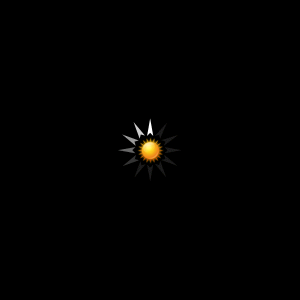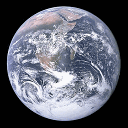AIA 304
This channel is especially good at showing areas where cooler dense plumes of plasma (filaments and prominences) are located above the visible surface of the Sun. Many of these features either can't be seen or appear as dark lines in the other channels. The bright areas show places where the plasma has a high density
Where: Upper chromosphere and lower transition region
Wavelength: 304 angstroms (0.0000000304 m) = Extreme Ultraviolet
Primary ions seen: singly ionized helium (He II)
Characteristic temperature: 50,000 K (90,000 F)

| NOAA Scale | Past 24 hrs | Current |
|---|---|---|
| Geomagnetic Storms | G1 | G0 |
| Solar Radiation Storms | S0 | S0 |
| Radio Blackouts | R1 | R0 |
This plot shows the current extent and position of the auroral oval in the northern hemisphere, extrapolated from measurements taken during the most recent polar pass of the NOAA POES satellite.read more



